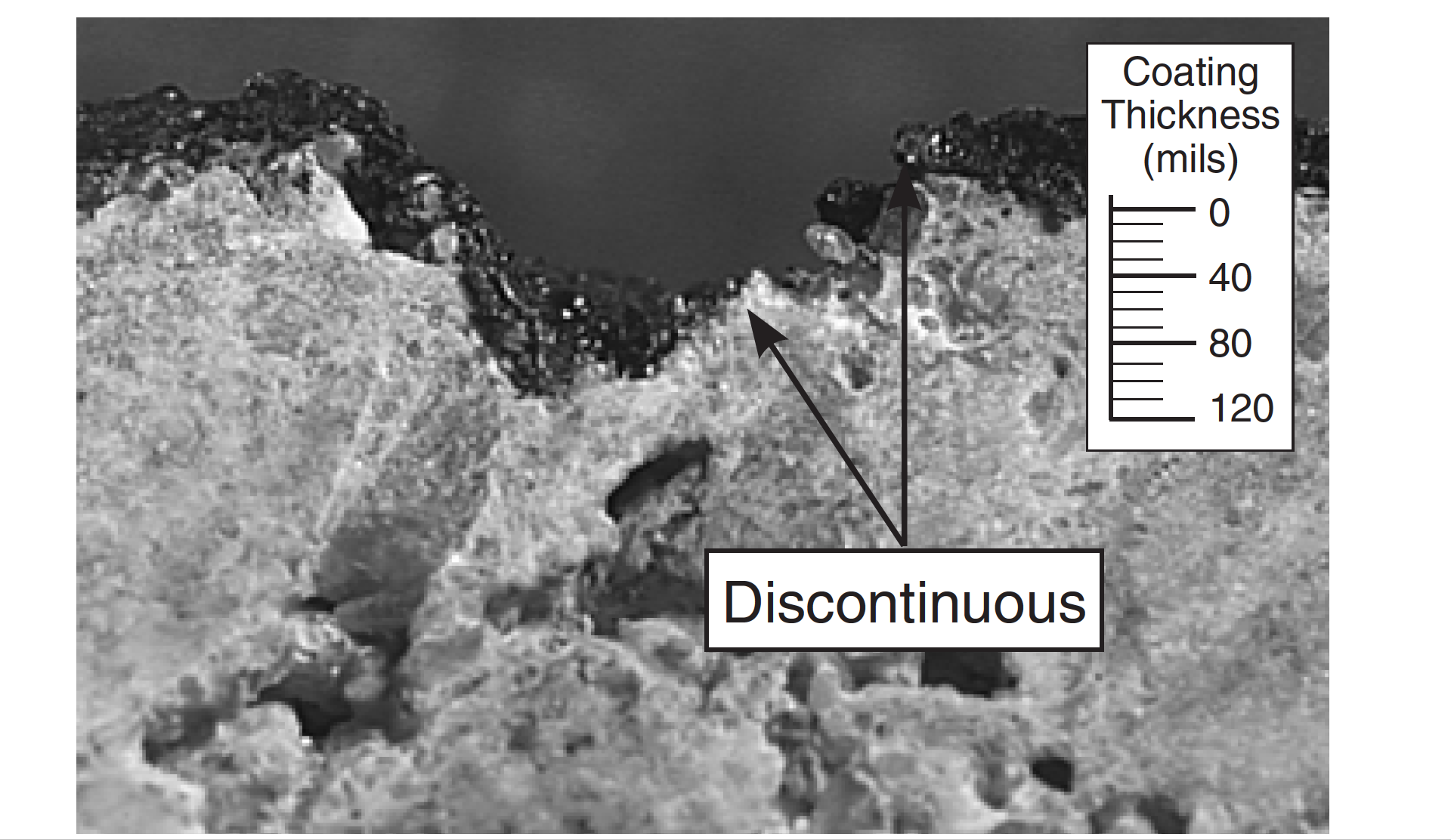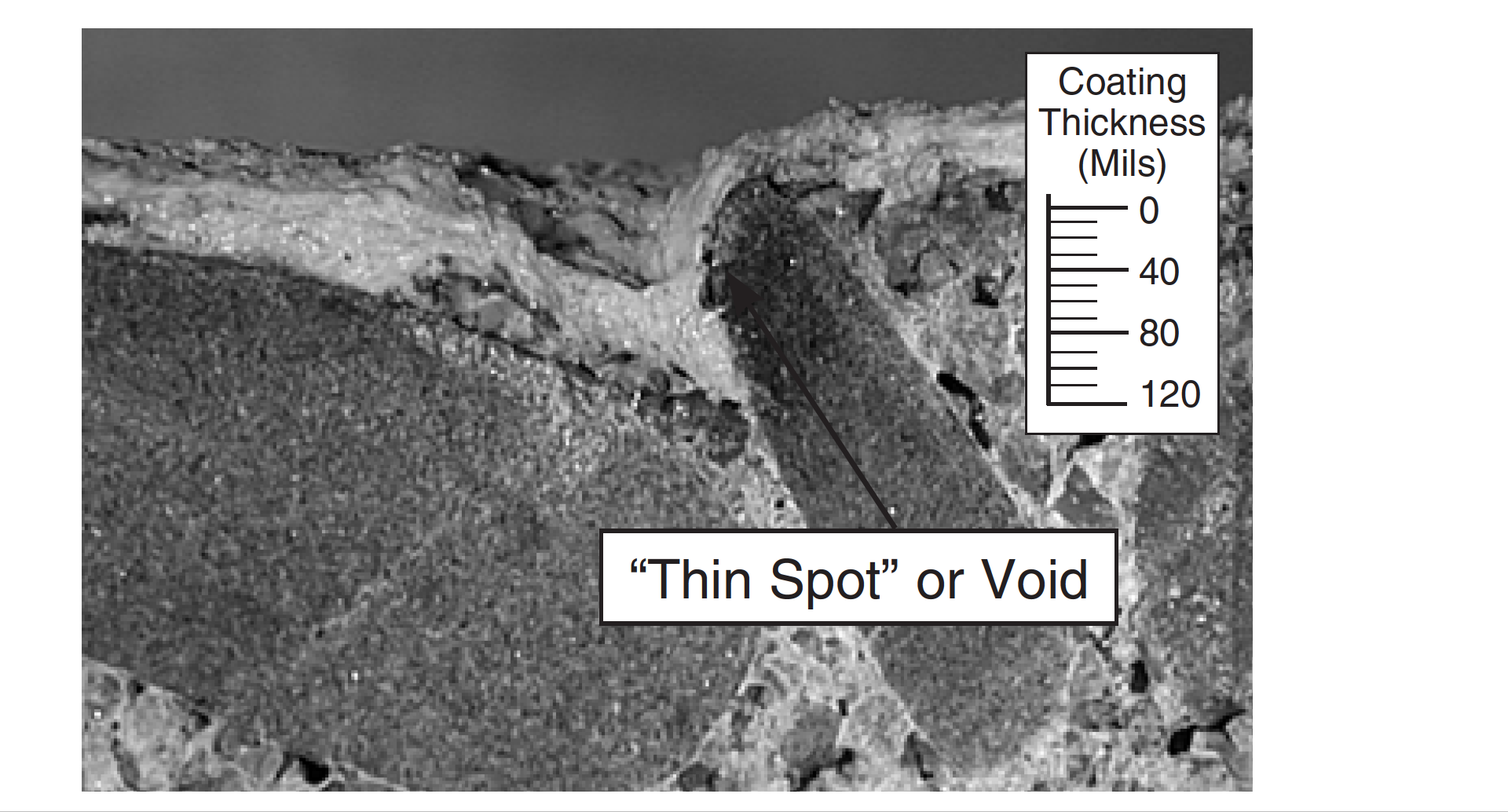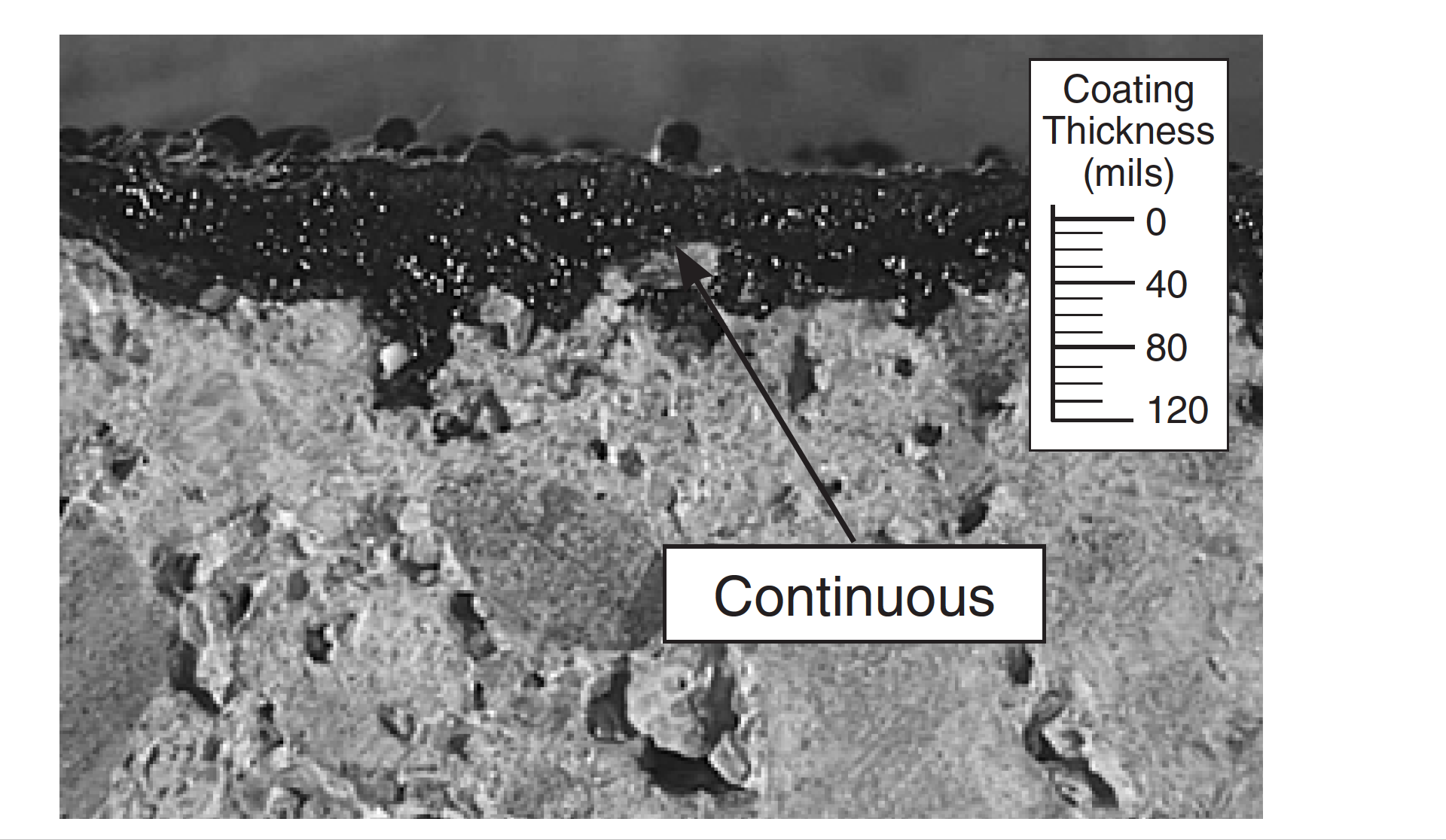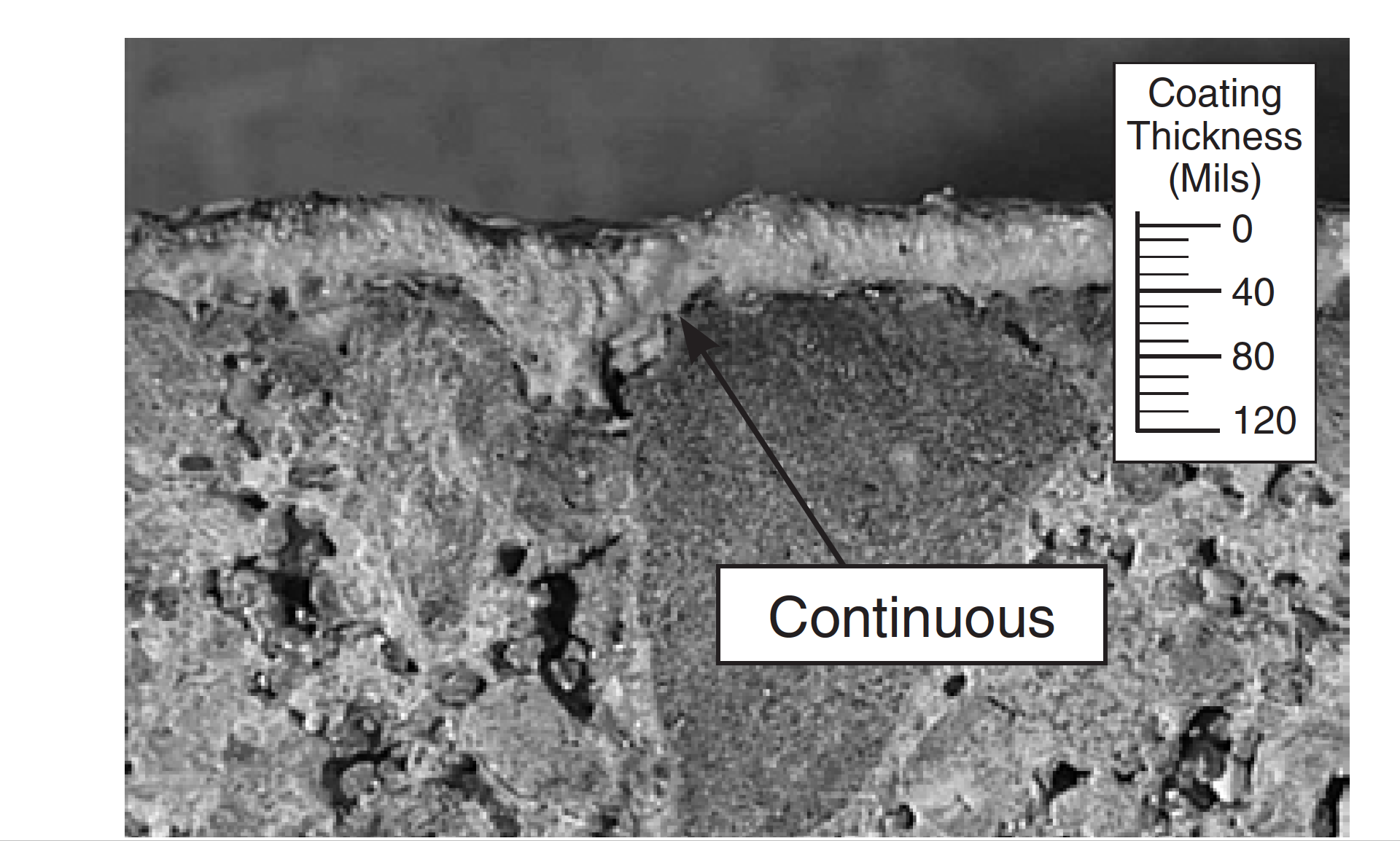To achieve desired air barrier performance, the coating thickness of a fluid applied membrane must be continuous. Continuous membrane coverage requires that the coating thickness be sufficient to cover the high and low points of the substrate. Lack of continuity in the membrane results in voids that reduce overall system performance.
As the roughness of the substrate surface increases, the coating thickness required to achieve a continuous membrane also increases. To better understand the impact of substrate roughness on a fluid applied air barrier thickness requirements, tests were conducted at GCP Applied Technologies laboratories for both commercially available asphalt emulsion and PERM-A-BARRIER® fluid applied products.
Two substrates were evaluated, a relatively smooth surface (DensGlass Gold® Exterior Guard) and a rougher, more irregular surface (commercially available concrete block). Fluid applied air barrier coatings were sprayed by an ABAA certified commercial contractor. Samples were then evaluated for membrane continuity by microscopic analysis and performance by ASTM E 1186 “Air Leakage Site Detection in Building Envelope and Air Retarder Systems”.
The results indicate that the coating thickness required to achieve acceptable performance increases with substrate roughness. A summary of findings is shown below:
DensGlass Gold® Exterior Guard
A carefully applied, consistent 40 mil dry film thickness can be adequate to pass ASTM E 1186.
- For discontinuities in the board system, such as panel joints and penetrations, additional coating thickness is required. Such discontinuities should be taped, treated with a 40 mil dry film thickness and then the entire assembly should be sprayed with an additional 40 mil dry film thickness.
Concrete Block (commercially available, medium density concrete masonry unit)
A carefully applied, consistent 60 mil dry film thickness can be adequate to pass ASTM E 1186.
- A 40 mil dry film thickness coating does not achieve a continuous membrane. (See Figures 1 & 2)
- GCP recommends that a minimum 60 mil dry film thickness coating be applied. While a 60 mil dry film thickness is generally sufficient, the contractor must carefully inspect each application for continuity and apply additional material for situations where excessive surface roughness exists. (See Figures 3 & 4)
- A 90 mil dry film thickness coating was also applied to concrete block. While possibly more than required, a 90 mil dry film thickness coating provided a continuous membrane with safety margin. The full laboratory report is available upon request.




gcpat.com | North America Customer Service: +1 (877) 423 6491
GCP Applied Technologies Inc., 2325 Lakeview Parkway, Suite 400, Alpharetta, GA 30009, USA
GCP Canada, Inc., 294 Clements Road, West, Ajax, Ontario, Canada L1S 3C6
This document is only current as of the last updated date stated below and is valid only for use in the United States. It is important that you always refer to the currently available information at the URL below to provide the most current product information at the time of use. Additional literature such as Contractor Manuals, Technical Bulletins, Detail Drawings and detailing recommendations and other relevant documents are also available on www.gcpat.com. Information found on other websites must not be relied upon, as they may not be up-to-date or applicable to the conditions in your location and we do not accept any responsibility for their content. If there are any conflicts or if you need more information, please contact GCP Customer Service.
Last Updated: 2025-05-13
https://gcpat.com/en/solutions/products/perm-a-barrier-air-barrier-system/tl-0012-impact-substrate-roughness-and-coating